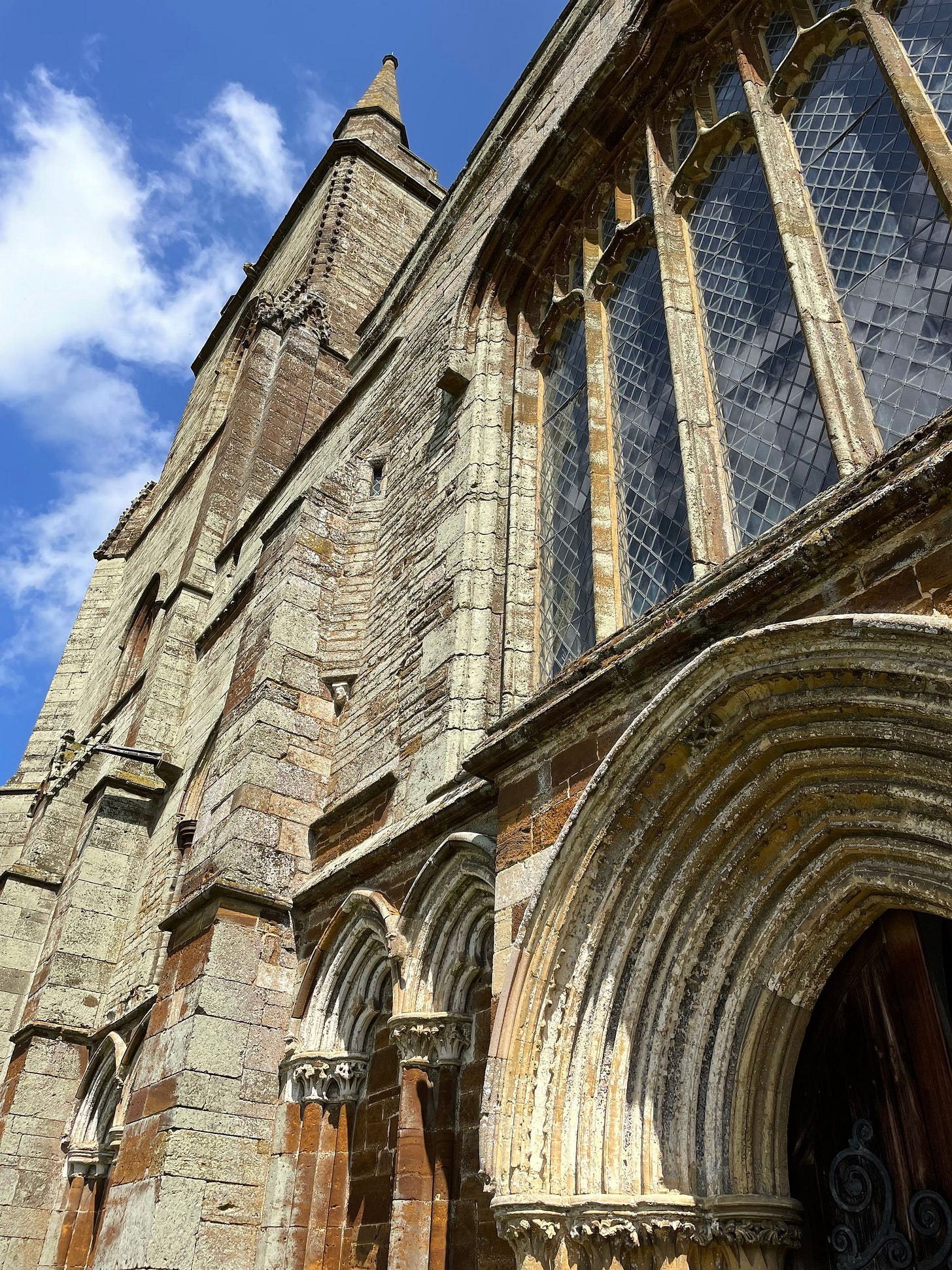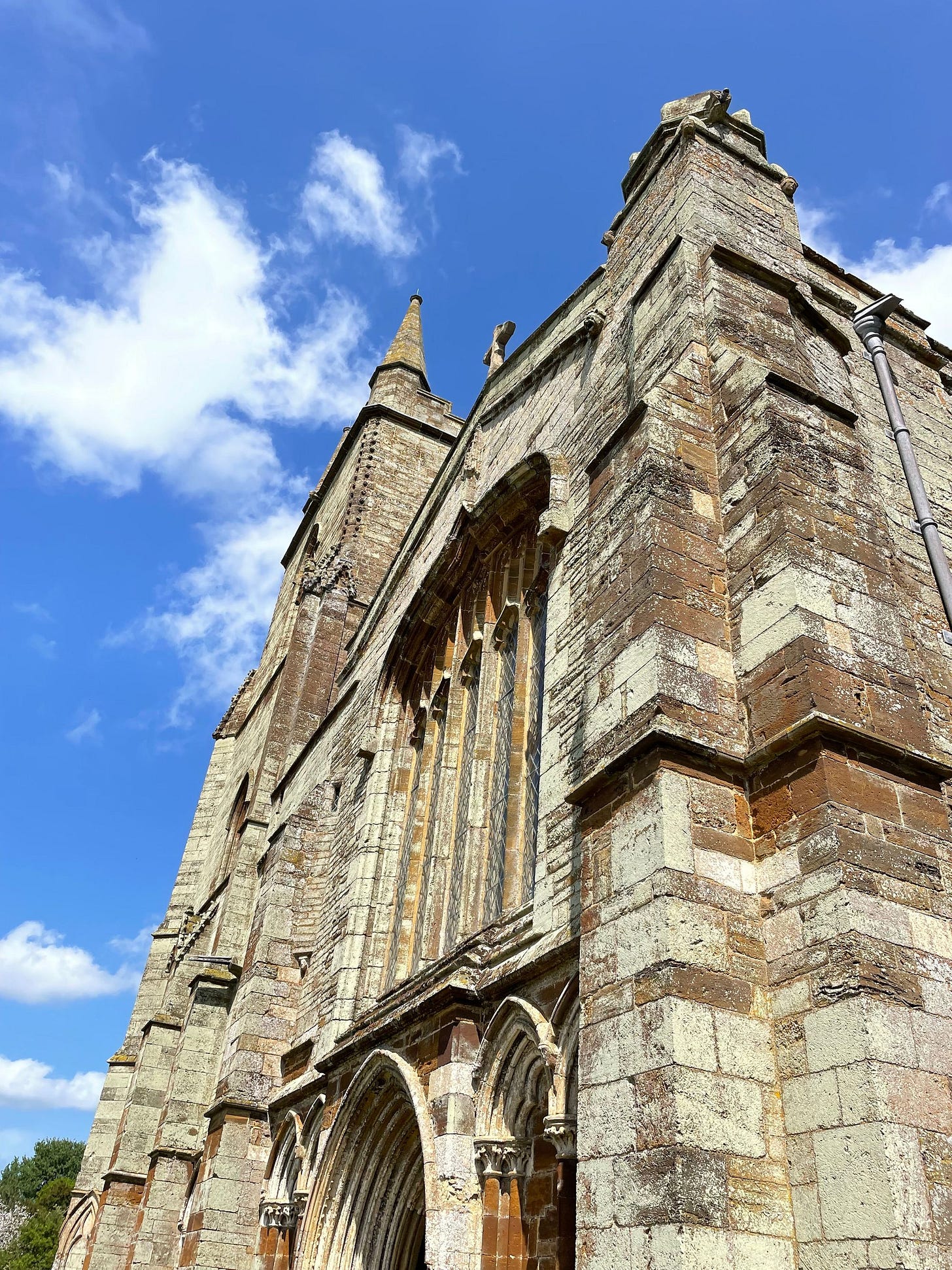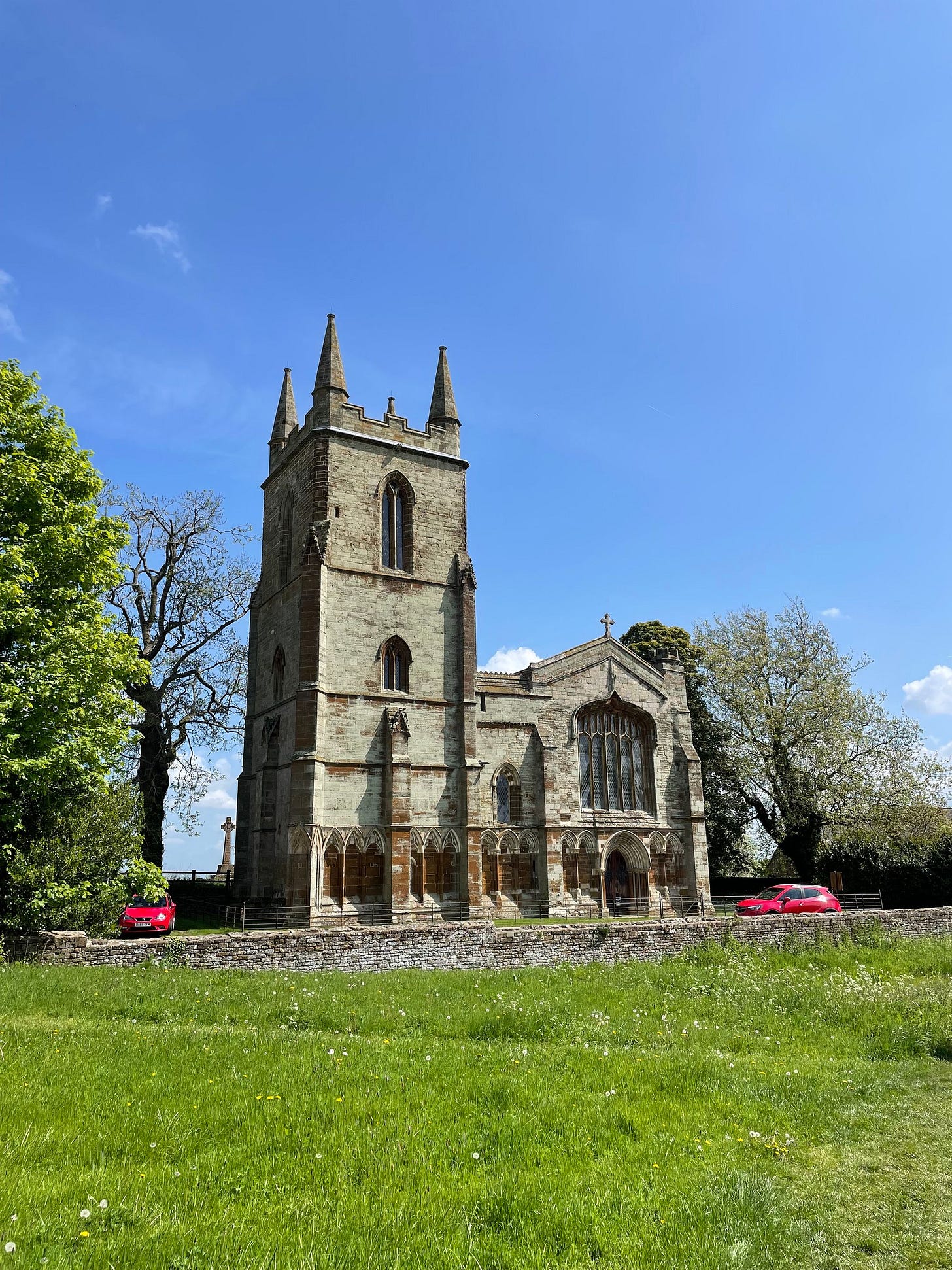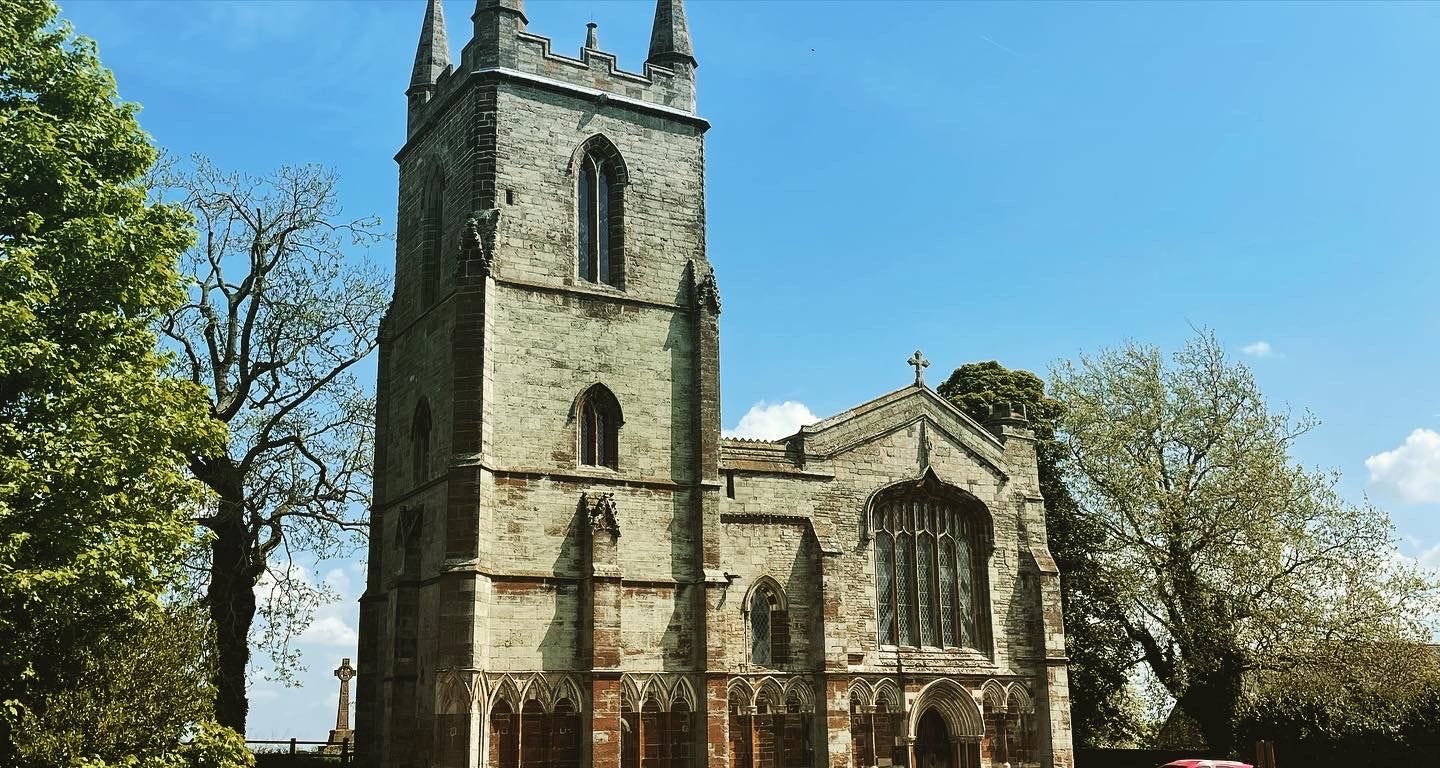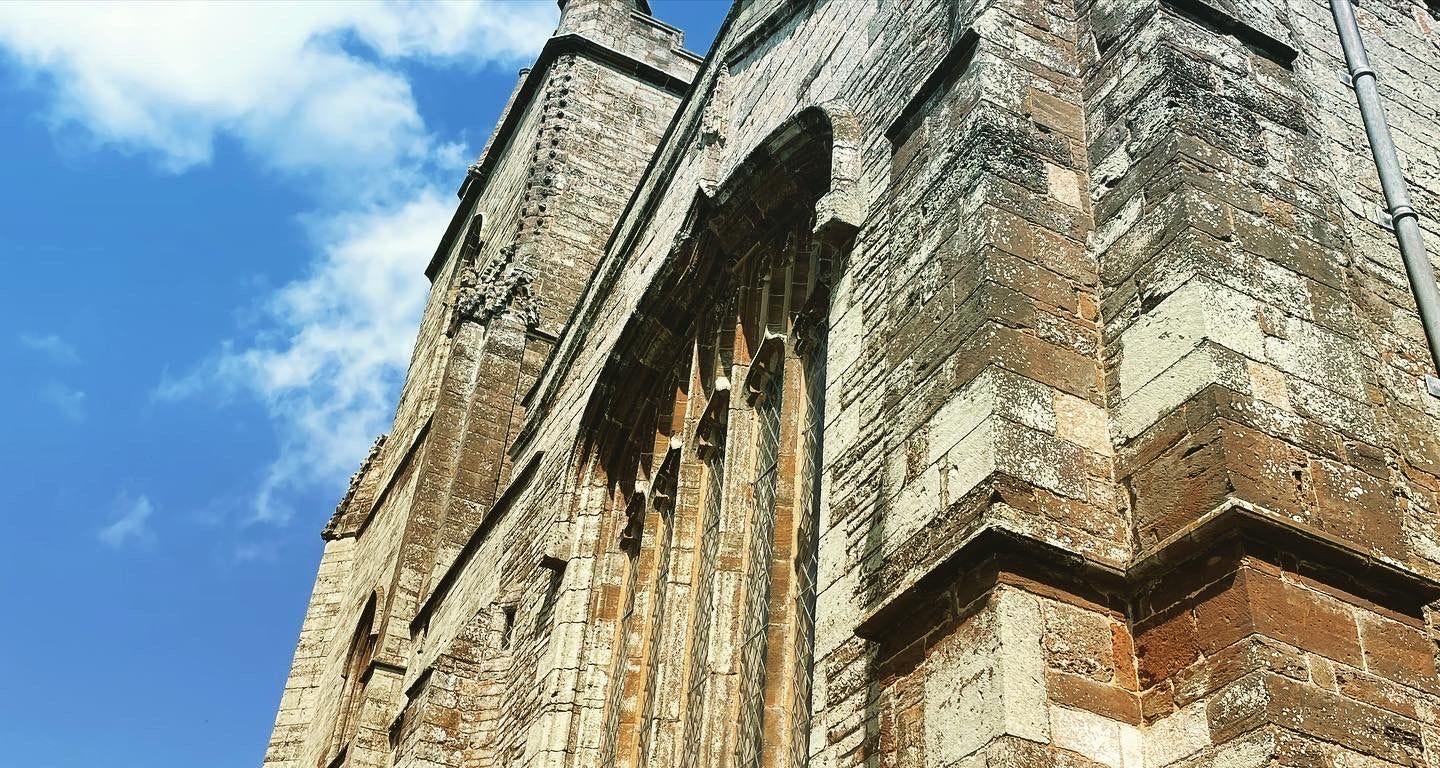Church-Going
A serious house on serious earth it is,
In whose blent air all our compulsions meet,
Are recognized, and robed as destinies.
And that much never can be obsolete,
Since someone will forever be surprising
A hunger in himself to be more serious,
And gravitating with it to this ground,
Which, he once heard, was proper to grow wise in,
If only that so many dead lie round.
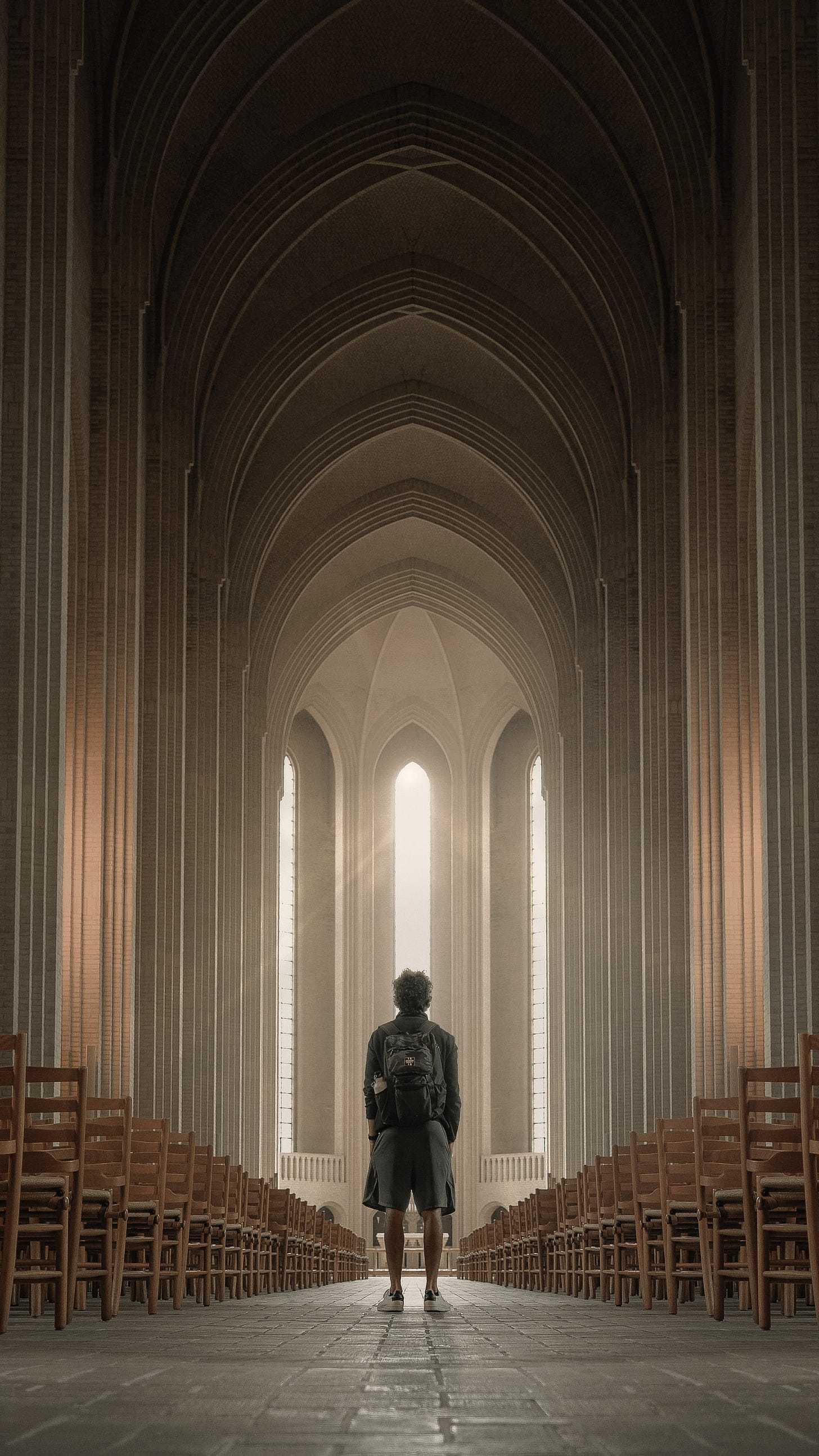
—Larkin, 'Church-Going'
I still own the tape, though I haven’t owned a VCR for years. The curlicues of maternal handwriting spell out the past: Alex’s Baptism Video. Though I haven’t watched the tape in a long time, I remember watching it as a child. 1988 whorled giddily to life, resolving on a grey day outside a big beige pyramid. The pyramid is a church, The Sacred Heart. It is an ugly, brutal, beige structure, a mockery of architecture and taste. Outside it, people gather: men in light grey suits, hair coiffed, women pulled wide by shoulderpads and narrow by belts. Everyone is shot in the soft focus of family portraits, as though the past could melt or diffuse. And there’s me, swaddled, a bundle of white, in my mother’s arms.
Cut to my uncle, alone, frantically tying his laces before hurrying inside.Cut to Satan being renounced.Cut to my Baptismal squawk.Cut to teeth and flash. Poses on the sanctuary steps. Fussing, cooing.Cut to the men lingering in the foyer, checking their watches.Cut to the house, that old sofa, the one with the faded birds. Cut to half-recognised faces. Cut toasts and sloshing and, finally, Whitney Houston’s ‘The Greatest Love of All’ over a montage of my baby photos.
And with that, my church-going career began.
The first half of my life was marked out by churches; they were the constant. Their far spires drew us, mothlike. Some of my earliest memories are of being shushed at weekday morning Mass, old women pinching their lips in disproval at this chatty child who wants to know where Jesus is in the bread, exactly. We went to a prayer group Mondays, too, and old Harry lay his guitar on the floor and let me strum it while they sing. The boy’s a natural. All our babysitters were old women from the church; on Sunday evenings we’d often host one of the priests for chicken korma on the special plates. I’d take my first confession at 7 and my first communion at 8. I remember the photograph: I’m bowl-cut and waistcoated, grinning. Who could blame me? I’d just received Christ for the first time.Dad left, and we went to church more and more. We went daily in the school holidays. Each Saturday we went to confession and we went to exposition of the blessed sacrament[1] on Thursdays. Mum befriended a mad nun from Oundle and soon we were round her house all the time, in a special prayer group she called the Cenacle. We went to Walsingham every summer: that was our holiday. I became an altar boy shortly after my first communion, proud in an alb, a miniature priest. It was around this time, actually, that mum started suggesting the priesthood. It looked tremendously fun and important. Later, the nun would tell her that all time was present to God and we’d put on masses in mini stoles and chasubles, our albs and cassocks dragging. Once I wore a tea-cosy as a mitre when I was upgraded to bishop. I went to Catholic church. I went to a Catholic school. I read devotional books and spoke to priests. I blessed my father with holy water surreptitiously and that night I prayed that he’d come back.
It’s a mesh of memories now. The church was everything. Churches — the buildings — were everything. They were almost industrial: they hummed and throbbed and pulsed and beat to the rhythms of God’s industry. The chant of the Creed, the thuribles blurts of smoke, the mechanised kneeling. Call, response. Unison. Plainsong. Latin, occasionally, like the voice of the dead. Rafters above, far above, everything a miracle of two-point perspective. Lines, planes, angles. Everything cruciform. Gold, gilt, marble, brass. The doors, hulking and heavy. The sepulchral thunk of them. Everything echoed off the stone
Eventually, I stopped going. I caught atheism sometime in my later teens. My mother’s fury was second only to her disbelief. I had to keep up the pretence. I had to keep going. Smile at the organist. Say hello to Fr Andrew. What would your Granny say?. It was just a phase; everyone has a Dark Night of the Soul. But nights stretched out to weeks. I refused. Shouts. The drawing of some invisible line. She relented. But when I walked out of that building for the final time, knowing next Sunday I’d be sleeping in, I left some things behind.
I left my mother behind. I would learn that she was too woven within the fabric of that place for her to ever truly follow me. At home on Sunday mornings I’d hear the front door and pad out onto the landing. The Infant Child of Prague would look out from the landing window, his placid eyes more judgmental than sometimes I could bear. Descending the stairs, here was St Joseph, eyes averted, then Therese of Lisieux, a proper saint whose faith never wavered; later, in the hall, Padre Pio, stigmatic, his hands wadded with red cloth. Our Lady of Medjugorje. Our Lady of Fatima. St Anthony, where did I leave my car keys. And the holy water font by the front door. A wet cross on the forehead. Angel’s holding fast at the house’s four corners.
I left my mother behind.
Why is it, then, when I come across a church now, as an adult, I feel an
urge to enter? First, I look up, craning my neck so the spire kisses heaven. I take in buttresses, Fleurs-de-Lis, trefoils. I walk around the outside, feeling its bulges: transept, apse, chancel. When I go in, the air changes, and there is always an echo. The most recent church I visited was Canons Ashby St Mary's. It’s but a fragment of the huge priory of which it was once a part. It’s whitewashed, but the ghosts of cherubim peep pinkly out above the sanctuary. Wood, stone, worn by feet and hands. Stained glass glowers effulgent. I hear my mother’s voice — No tabernacle; Christ is not truly present like he is in our church; I always note the absence of the red light. There is no lady chapel, no rood screen. The place holds its past silently, invisibly.
Why am I drawn to these places? Is it because I’ve a hunger in me ‘to be more serious’, as Larkin posits in ‘Church Going’. While I share his sense of ‘awkward reverence’, there’s something else for me. It’s to do with the ghosts. Their bodies lie in the churchyard and under slabs, but they — they — remain inside, in the warm and dry. People stay in churches long after their departure.When the door closes, a leave some of myself. And I wonder if she’s there, too.
'Exposition' saw the consecrated host displayed in an elaborate case called a monstrance. The idea was that you looked at the host — which, for Catholics, was literally Jesus, and spent the time in quiet prayer, reflection, and devotion. ↩︎




